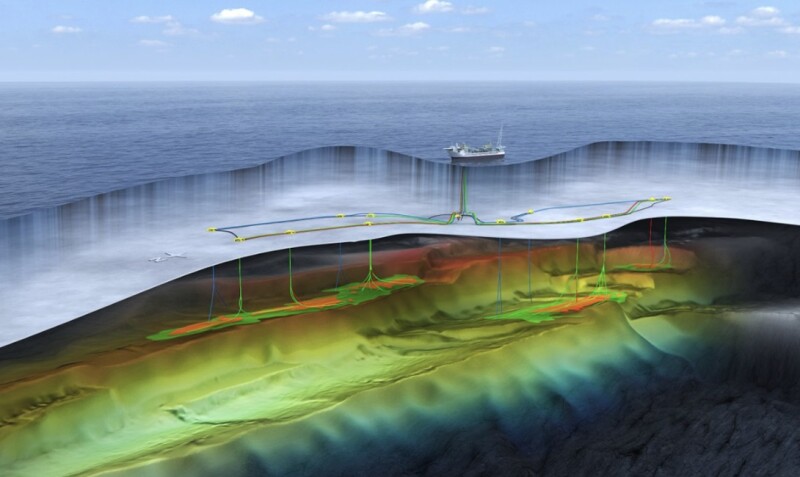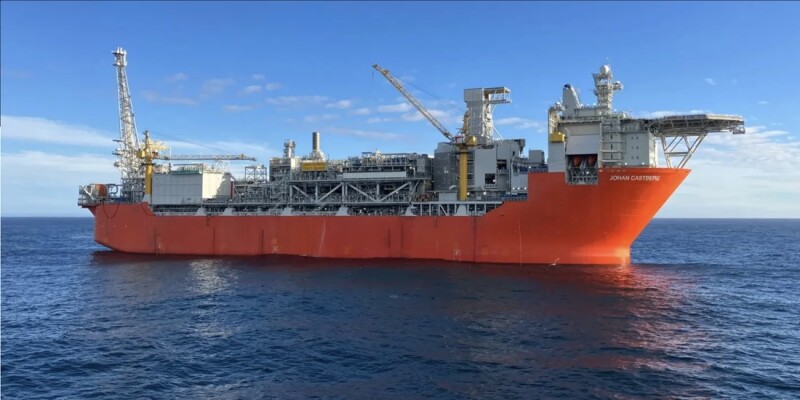Equinor has brought production on stream from Norway’s northernmost field.
The Norwegian operator announced its Johan Castberg oil field in the Barents Sea had begun production on 31 March. It is expected to reach plateau production in the second quarter of 2025, and 12 production wells are ready to begin production. Drilling operations for the remaining wells are expected to continue through 2026. Development plans call for 18 horizontal production wells and 12 injection wells.
At peak, the Johan Castberg floating production, storage, and offloading (FPSO) vessel can produce 220,000 BOPD and store 1.1 million bbl of oil. Recoverable volumes are estimated at between 450 million and 650 million bbl amongst the Skrugard, Havis, and Drivis discoveries targeted by the project. Production life is 30 years for the project in PL 532. Water depth in the area is between 360 and 390 m. The production plan calls for 30 wells distributed across 10 well templates and two satellite structures.

Equinor said it sees the Johan Castberg field, about 100 km north of the Snøhvit field in the Barents Sea, as a backbone for further activity in Northern Norway.
Kjetil Hove, Equinor’s executive vice president for exploration and production Norway, said in a news release that the project opens a new region for oil recovery. The field is the second oil field in the Barents Sea.
“We’ve already made new discoveries in the area and will keep exploring together with our partners. We’ve identified options to add 250 million–550 million new recoverable barrels that can be developed and produced over Johan Castberg,” he said.
Field partner Vår Energi called the Johan Castberg area highly prospective and said several recent discoveries are being matured into projects, including Johan Castberg Cluster 1. Cluster 2 is progressing through near-field exploration, and an extensive infill drilling program is being planned.
Road to Production
Moving from discovery to production was a long and winding road. While Equinor discovered hydrocarbons at Skrugard in April 2011, at Havis in January 2012, and at Drivis in May 2014, high materials and services costs combined with low oil prices in 2014 and 2015 made it difficult to find a commercially viable solution to develop the remote Barents Sea resources.
In 2017, Equinor submitted its plan for development and operation for a $6 billion FPSO-based project, which was initially expected to begin production in 2022. At the time, Equinor said the project would be profitable at oil prices under $35/bbl.
The COVID-19 pandemic, welding problems, and currency effect contributed to cost overruns.
Geir Tungesvik, Equinor’s executive vice president for projects, drilling, and procurement, said in a news release that the Johan Castberg project, which cost $8.16 billion, is expected to be repaid in less than 2 years.
Aker Solutions supplied the subsea system and designed the topside for the FPSO. Sembcorp Marine constructed the FPSO’s hull and integrated living quarters and delivered the hull in February 2022. The FPSO underwent sea trials before entering the hookup phase last year.
Equinor operates the field with 46.3% interest on behalf of partners Vår Energi with 30% and Petoro with 23.7% interest.


